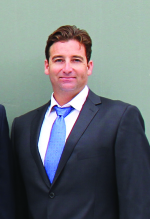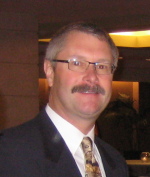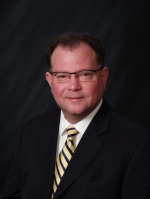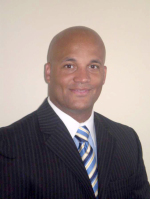The ISO Story
August 01, 2014
by Sean Ruck, Contributing Editor
Not all independent service organizations are alike. Experience and scope of practice can differ greatly from company to company. So DOTmed HealthCare Business News interviewed more than a dozen ISOs to get their take on how their business has developed and why and how they fit into the big picture. They also offer their insight into what customers should keep an eye out for and offer predictions about what the parts and service sector will look like five years from now.
When it comes to their value propositions, the ISOs all had strong cases to make. The organizations interviewed generally felt that their breadth of experience stretches beyond that of the in-house departments, but it’s delivered at a lower cost than what the OEMs offer.
Exploring options
“Our experiences have made us an equal competitor, if not a better choice,” wrote Damon Kelley, VP of operating for Pacific Medical in an email to HCBN. Kelley feels the company’s team approach philosophy is another way they differentiate themselves from the competition. “Every transaction is with an assigned representative who supports [the customer] through constant communication, instant service updates and after-sales tech support,” Kelley wrote.
Price often comes in below the OEM tag by focusing on replacing single components on a board rather than replacing the entire board, according to Kelley. But replacing components rather than entire modules is becoming increasingly difficult as equipment becomes less mechanical and more sophisticated. “As a result, technicians are expected to be more advanced in their field,” Kelley wrote.
According to Kelley, recertified equipment has become a preferred alternative to brand new equipment and is one of the fastest growing segments of Pacific Medical’s business. For that process, equipment is evaluated by Pacific’s engineering team and then all common failure components are replaced and the piece is recalibrated and retested. It’s triple-checked by the QC department, cleaned and then either put into inventory or prepared for shipment, explains Kelley.
As for negotiating service contracts, Kelley suggested that facilities should educate themselves on the life expectancy of the product, its uptime and replacement parts costs. He also cautioned that they should be sure of the dependability of the company they’re dealing with and not let empty third-party promises or lowest cost be the deciding factor.
Ali Yousef, CEO of USOC Medical echoed the importance of dealing with a reputable company. “Quality!” he wrote when asked what makes one ISO better than the next. “There are countless ‘repair’ companies that specialize in patient monitors, but only a handful have the engineering capabilities to actually do the repairs in-house.”
According to Yousef, it’s not necessarily lack of experience that holds in-house staffback. Instead, it’s lack of resources and time that really put the squeeze on in-house teams. But experience can still play a big part. Many hospitals may only have one or two units of a given modality, so troubleshooting and the subsequent practice and familiarity that comes with hands-on experience doesn’t occur as often.
Yousef recounted one service issue that illustrates that point, “A customer was having a problem assigning a telemetry transmitter to the central station.”
It was a matter of clearing out the system cache — a simple fix, but difficult if you haven’t come across the problem before. Yousef’s techs have seen the problem before, so were able to fix it. “The customer was on the brink of purchasing a whole new unit in order to solve the problem,” he says.
When it comes to negotiating contracts or renewing them, Yousef recommends hospital teams sit down and review detailed reports containing trending data for at least a year previous to determine the threshold for repair versus replacement. If it turns out the unit might cost too much to maintain, it might be a good time to retire it.
The role of politics and government policies
There will some big changes in health care within the next few years according to Marshall Shannon, director of Image Technology Consulting. “It depends on whether we get a Republican or a Democrat president,” he says.
Expanding on the thought, he admits it’s not a question of partisanship, but more the fact that the government’s changes are hurting providers and forcing them to keep older equipment working which may ultimately increase costs in the long run. It also makes the service field a rougher place to be for those in the business. Shannon says that the longer the equipment stays in the field, the less new equipment business there is for the OEMs. This forces them to explore other revenue generators and an increase in the number of OEMs offering service and venturing into the multi-vendor service field. It also helps to explain the glut of consolidations and buyouts of ISOs by OEMs.
But there’s a limit to that philosophy. If hospitals are able to readily afford new equipment, that can also make business tough for independent service organizations. “It will decrease the parts business because people are buying new equipment,” Shannon says. “There is less demand to repair the old equipment because people are getting rid of them,” he says.
For health care overall, the consolidation has hit health care providers too. That has caused pain for patients and seems counterproductive to lowering health care costs, according to Shannon. “This year, I have seen 30 or 40 clinics shut down. They have large modalities and were doing mainly Medicare and Medicaid and they were getting reimbursed just enough to stay open.” He says the closures mean patients get pushed off to other larger imaging centers or hospitals and the costs go up. “The customer is forced to pay more because they could have gotten an MR for $500 or $600 and they’re paying $2,500 at a hospital.”
What is the cost of good service?
According to Dale Hockel, senior vice president of Operations for TriMedx Equipment Services, the woes of the health care sector will continue to be felt for the foreseeable future and will continue to exert pressure on providers to reduce spending and save money. That will continue to drive consolidation and stunt growth by hospitals and health systems.
For companies providing service to the sector, those pressures will increase the need to evolve or fade away. “I believe OEMs will continue to maintain a necessary presence, but you will see a greater shift into providing online tools and support for properly trained and informed in-house biomedical teams,” Hockel wrote in an email.
Hockel shares the opinion of a number of industry veterans when he wrote that comprehensive lifecycle programs developed around hospitals’ capital assets will be one of the key focuses for health care in the future. According to Hockel, independent service programs can be a key part of the solution by helping to train in-house biomeds as well as by helping hospitals to assess lifetime service costs, uptime statistics, utilization, failure history and equipment life expectancy for equipment.
“The bottom-line: the future of the equipment service sector is promising so long as hospitals are able to obtain and maintain accurate equipment inventories, gain access to total cost of ownership data, and enlist strong clinical engineering involvement in the capital acquisition process,” Hockel wrote. “The formula for this success cannot be replaced by the latest wave of asset management software. Nor does one solution fit all.”
For some facilities, economy of scale can deliver big savings if they have a large install base, but that won’t be the case for all. “Hospitals must understand the specific objectives around asset utilization and design a process with the appropriate team, training and technology to reach those goals,” Hockel says.
Hockel believes that in order to reach those goals, hospitals must also take a more active ownership, or at least possess a strong understanding of the impact the service contracts have not just on the bottom line, but on the mindset of staff as well. “Service contracts tend to create an environment of unwarranted dependency where hospital staff immediately calls the OEM for repair and preventative maintenance rather than relying on the in-house CE team,” Hockel wrote.
Hockel says that situation regularly results in having no comprehensive lifecycle plan in place, leading to bloated service contracts that make it more difficult to bring service in-house in the future. Of particular concern according to Hockel is that OEMs often have an auto-renewal clause in their service contracts which could lock a hospital into a new long-term contract even if they’re ready to make a move into greater self sufficiency.
“Negotiating service contracts starts with training and ends with communication and teamwork,” Hockel wrote. “Ensuring inhouse CE team is properly trained to handle most service and preventive maintenance goes a long way in reducing reliance on contracts. Ensuring everyone on the capital acquisition team (including clinicians who use equipment) is informed of CE’s role and capabilities and are communicating internally prior to engaging the OEM will immediately eliminate unnecessary costs.”
Multiple solutions from a single source
While hospitals and health care facilities definitely scrutinize costs when it comes to parts and service, deciding to go with one partner or multiple organizations also is important which each option providing benefits and drawbacks.
Zetta Medical Technologies is dialed in to that detail and is one of the companies that positions itself as a multi-vendor service company, carrying MR, CT and PET/CT parts from the major OEMs. Melissa Roy, marketing and business process administrator at Zetta believes that’s part of the secret sauce to making the best ISOs. “Having all your resources in-house from applications specialists, to owning your own tools and test equipment, to having a team of the best technical support available is what sets you apart,” she wrote in an email to HCBN. “This allows us to use our own resources that’s why there has been to complete services and projects without the need to charge our customers for subcontractors or renting of tools and equipment. These in-house resources include parts repair, equipment relocations, applications specialists, technical support teams and training,” she wrote.
In Roy’s opinion, hospitals need to understand a service company’s technical capabilities. They should also be aware of where the primary engineers are located and what training they have on the systems the hospital uses.
It’s up to the customer to practice due diligence when considering a service provider.
“There’s typically a reason for a lower cost — find out why,” writes Roy. “What is in the fine print and are they really comparing apples to apples?”
Out-of-house value brought the in-house
When Sandy Morford, CEO of Renovo Solutions meets with potential hospital clients, he is often asked about the value that Renovo brings to the table that isn’t already provided by OEM or in-house service teams. In fact, he’s asked the question so regularly that he has developed a list of bullet points in response.
As part of the list, Morford lets clients know that clinical and diagnostic imaging equipment management is Renovo’s only business. And the company’s track record shows it has benefitted from that specialization with more than 300 programs implemented and managed over the last decade. Although Morford provides another half dozen bullet points, the main point is clear— he’s selling service based on substantial experience and a company history to back up their claims. All of which goes back to their business philosophy, “Promises made, promises kept.”
Companies that deliver on their promises deliver dependability. But just delivering on those promises isn’t necessarily enough if all the needs of the customer aren’t being met. Morford knows there’s more than just having the experience and doing a good job. “Primarily, we listen to the client,” he says. “In this business of medical equipment service, the cliché ‘one size does not fit all’ very much applies. If a client insists on OEM service for a critical piece of equipment under our management program, they receive OEM service. We never try to force the use of a particular service provider on our clients, unless we obtain their buy-in and agreement that an alternate service provider makes the most sense operationally and financially.”
Morford advises providers to keep cost in mind while considering service contracts, but to not make that the sole, or even the most important deciding factor. He advises those in the market to give due consideration to service quality, response time, escalation policy and uptime guarantees among other things. He also stresses providers should call around for references before entering into an agreement with any service provider.
Ken Sandifer, as the president of Healthcare Technologies at Aramark Healthcare, has no shortage of references available to speak with potential customers. The company manages more than 1.7 million multivendor assets on behalf of over 550 North American hospitals and health systems everyday according to Sandifer. That large network of customers has given the company the leverage of scale that has helped it to gain valuable insight regarding equipment reliability and performance, which the company uses to determine the right service solutions for customers.
“Like most organizations, we are optimizing our supply chain through national agreements that leverage our scale,” Sandifer says.
The company has centralized its specialized program development, training supply chain, call center, parts and corporate functions within a new state-of-the-art headquarters in Charlotte, North Carolina, known as the Technology & Innovation Center, and continues to invest in technical training, tools and resources for its staff.
Sandifer sees that investment in innovation as a necessity, especially in these days of health care reform. “Healthcare reform is driving a fundamental shift in how and where care is delivered,” he says. “At the same time, the medical equipment and environments that we serve are becoming more complex and more networked every day, which requires a shift in our talent profile. The needs of our customers are changing and will change even more in the next five years.”
Parts as a piece of the puzzle
While many companies offer service solutions and some sell parts in addition to offering service, fewer concentrate solely on the parts side of the equation, with companies in that group often specializing in specific products or manufacturers.
Josh Glas, president of PhiGEM Parts is among that smaller group delivering parts when and where they’re needed. According to Glas, navigating the parts arena requires dedication to the business. It is fast-paced with purchase decisions occurring quickly— usually within minutes or hours or at the very least within the same day as an equipment’s failure. The pressure increases when the stakes are high with some equipment downtime amounting to literally thousands in lost revenue each day.
PhiGem generally supplies about 60 percent of the parts they sell to third-party brokers with the remainder going directly to in-house service engineers.
While Glas acknowledges that endorsements by customers can be useful, one of the true litmus tests for determining a parts provider’s ability to deliver relies on their infrastructure. “The ability to truly test parts plays a role in ‘being better,’” he says. “However, if a provider does not have test bays for everything, ask about their pre-deinstall inspections and deinstall procedures. How are they removed and transported and them disassembled and stored? These are all important questions to get answers to prior to deciding to purchase from one vendor or another,” he says.
Glas sees a shift in the parts marketplace, with more partnerships emerging and mergers being discussed. “I am also seeing a lot of brokers who dealt in equipment only trying their hands at parts now, starting new companies or just subsidiaries, etcetera. I think this is in response to the larger corporate acquisitions that have happened over the past couple of years. It really is very interesting to watch,” he says.
In order to deliver savings, Glas says PhiGEM Parts sells from their own stock 99 percent of the time. “This way we are able to keep costs down, quality up and best-serve the customers’ needs.”
Glas says other cost factors such as time to ship, quality of the parts, limiting downtime and resolution of the issues also come into play.
MedEquip Parts Plus is another player that works in a more specific niche of the parts sector as its main business. Dave French, vice president of the company says the calls they get for parts normally flow in from purchasing managers for larger hospitals while smaller organizations have their techs buy directly. “We offer tech support and parts identification so when a company calls us, the guy right on the job, we can help them figure out the part they need and then they can call it into the parts purchasing department and they order the part. However, because we deal with mostly sterilizers and washers, it’s not usually the type of equipment that biomeds have loads of experience on so we can help,” he says.
MedEquip’s buyer breakdown is similar to PhiGEM’s with about 50 to 60 percent of sales directly to ISOs and the rest to in-house teams. “We sell very little to the OEMs. If we sell to the OEMs, we sell a different OEM’s product,” French says.
In the future, while the parts business will still be healthy, according to French, he believes it will be increasingly important to be more imaginative to keep up with ways to help the independent service person. “As long as they’re able to stay in business I think the second source parts provider is also going to do fine,” French says.
What about uptime?
With uptime being so crucial when it comes to profitability, having the tech at your door in a blink is a must. While no service provider is shuttling their techs around in a Learjet, the well-established and well-connected companies have networks of staff throughout the country or agreements with other service companies if they need extra coverage in an emergency.
By providing better response time and access to multiple vendors as well as building relationships, Mike Masterman, president of Imaging Associates is able to deliver lower cost solutions to the company’s clientele. “We’re constantly looking for partners to repair parts like power supplies and problematic parts,” he explains.
Masterman says hospitals need to really consider what their needs are in order to get the best deals when it comes to negotiating contracts. This also means the hospitals need to determine just how catastrophic having a particular machine offline would be and then determining the intelligent spend to insure against that problem.
With the budget crunch affecting hospitals big and small, insurance like that will grow in importance as the health care sector’s fleet of machines ages. “There will be a larger parts business,” says Anwar Abdelqader, sales manager at CBE Medical Inc. “The economy is bad, so companies will replace parts instead of buying new devices,” he says.
But when it does come time to buy, Abdelqader has a straightforward solution. “I gave my customer a comparison between two models , and let him know where to buy from,” he says.
Service strategies
While there are gray areas when one considers that some parts and service providers also sell refurbished machines as part of their business, many bring in their main income by keeping existing equipment up and profitable. In that way, they’re markedly different from the OEMs according to Pete McCann, vice president of sales for Modern Medical Systems. “From the OEM perspective, there tends to be a focus on their products rather than an overall view of the entire service strategy,” he says.
As for what ISOs can deliver to facilities with in-house service, McCann says they can be good for providing services for high-end, advanced equipment. If the facility doesn’t have an abundance of the machines, it may make it financially impractical to train in-house engineers to fix them. According to McCann, it is typically smaller health systems or even larger ones with remote sites that can benefit from ISOs.
McCann says since Modern Medical is strictly a service company, they have managed to perfect a labor model where they “right-size” the amount of labor needed rather than saying every item has a price. “We look at the entire spend of the system and develop and overall strategy for them.”
One unique component of Modern Medical’s business is their training. While many service organizations, both on the ISO and OEM sides offer technical training, Modern Medical also offers soft-skill training. “We teach management how to communicate with directors of other departments,” McCann explains. “It’s almost as important as being able to fix the item. They need to be able to communicate the issues clearly within their system and even at times with regulatory organizations,” he says.
Still, McCann says that the area where he’s noticing significant growth for the sector is within the acute care setting and with the larger networks that are starting to be able to be serviced through the ACO act.“With that, the affiliates owned by IDNs or health systems are getting attached to licensing groups and where they may have been a standalone physician group, they’re now being held to the same standards to mirror what the hospital is doing. The Joint Commission is going to look for that documentation. ”
Long-term benefits rather than short term profits
BC Technical’s executive vice president, Ken Smith, believes his company offers two big advantages compared to many OEM options in the market. According to Smith, BC Technical has low overhead and significant flexibility. Low overhead means less operating costs to pass on to customers, while the better flexibility means field service personnel can make decisions on the fly getting customers what they need quickly.
On the in-house front, Smith says they don’t compete, but are instead there as support. They can step in to offer assistance especially on systems that the in-house techs don’t get a chance to work with often.
Rounding out the service options, in comparison to other third parties, Smith considers BC Technical somewhere between OEM and ISO. The company has relationships will asset managers in large institutions across the country as well as with all the major OEMs. “We’re really the only true nationwide ISO for PET, Molecular Imaging, MR, CT. So we have the scale and we have capital, backed by one of the largest private equity firms in the country,” Smith says. BC Technical specializes in molecular imaging, CT and MR in their three facilities. The company also does some field training and multi-vendor service training.
“Some people look at training as if they’re training they’re competitors,” Smith says. “But we look at it as a partnership — we understand we’ll train and it will take some business away from us as things are taken in-house, but we can be there to provide parts or tech support. If they have a person leave, we can step in and fill in until they’re staffed back up.”
Smith’s philosophy is focused on the long-term. “If you’re around the industry long enough, you see the ebb and flow —in-house gaining a lot of traction, asset management gaining traction,” he says. “We’rein a consolidation mode. Imaging centers are consolidating or going out of business. We’ll see a lot of that in service too. I think we’re leading the way; we’ve purchased, I think, 11 companies over the past two or three years. Last year alone it was four or five companies. Our intent is to finish another three to five acquisitions before the end of the year.”
Smith believes the consolidation is fueled by the increase in rules and regulations. Smaller health care facilities and service organizations simply can’t keep up with compliance requirements.
Taking the complications out of contracts
Hospital administrators often have a lot, or even too much on their plates. So when faced with 30 or 40 pages of legalese to decipher for each and every service contract they sign, it’s common for some points to slip through. That’s why Patrick Lynch, HTM specialist at GMI recommends hospitals follow at least one example set by the Veteran Association. “The VA doesn’t sign contracts. They write their own and put them in front of the company to sign,” Lynch says.
It doesn’t make sense for everyone — for instance, GMI and a number of other ISOs have very brief two or three page contracts— but if your facility is regularly signing contracts made up of dozens of pages of dense jargon, investing upfront with a lawyer in order to pound out some boilerplate contracts might be worth looking into.
Lynch also suggests customers have the capability to adjust their contracts quickly as situations change. Adjusting quickly is key in today’s world of fast-changes to reimbursements and service requirements. Being able to ramp-up the service contract for a system that has become more profitable, or being able to cut back on service for one that’s not bringing in as much may be the difference between staying in the black or floundering in the red.
And when it comes to determining what you actually want in a service contract, for the extended warranty Lynch suggests thinking about it as you would an extended warranty from a box store for consumer electronics. “It’s the exact same sales process, and percentage. I’ve asked people at conferences how many have taken the extended warranty at Best Buy and no one ever has. Yet, for hospitals, they purchase differently.”
While it’s a buyer’s market in some ways, there are some components of the service sector that aren’t necessarily end-user friendly. “Part of this depends on what the federal government will require regarding service literature. As equipment gets more advanced on the software side, it’s easier for manufacturers to lock out others (including in-house service),” says Lynch. “The OEMs are well-connected and I mean, the CEO of GE sits down with President Obama, has a relationship there and they’re able to convince people at the highest levels that the same degree of care we’ve been giving for 30 years for all kinds of equipment, that we shouldn’t be allowed to do it for imaging equipment.”
Lynch also points out what he feels is a broken system for incentivizing hospital materials managers. “Unfortunately, materials managers are paid to purchase the equipment as cheaply as they can on the frontend. This actually incentivizes them to sign long-term service agreements. They may get a savings up front of 10 percent and sign a service contract that gives back 20 percent to the manufacturer,” he says.
“I believe that the rewards for GPOs and material managers don’t look at the long term. These agreements are often signed before we in clinical engineering even know the equipment is on the table for purchase.”
History lessons help guide service
Nearly everyone in the service sector agrees that one-size does not fit all when it comes to service contracts. But that still doesn’t prevent some from selling a one-size solution. That’s why Rick Stockton, president of Atlas Medical Technologies, places emphasis on looking at the history of a machine before finalizing a service contract. “If you look at the history of the machine, it may not have had a problem in a particular area,” he says. “So we’d rewrite the contract based on what they need.”
Customers may have a full-service contract, or may opt for a shared-risk contract. “If you’re not being utilized, you’re not paying,” he says. And if you do need service, the contract is set so that the customer will pay up to a certain amount and once the threshold is hit, Atlas covers the additional.
“We’ve reduced their overall expenditure to run the scanners and the liability hasn’t changed at all on the equipment,” says Stockton. But each customer needs to work with their provider to figure out the best fit for their needs. And they should be wary of the fine print. “There are so many things buried in these contracts,” Stockton warns. “For example, if you exceed the mAs bracket (the milliamp seconds or tube usage) they have set, then you pay a larger contract cost and that’s also then the contract agreement that they give you for the following year because that’s what they’re recorded as running under.”
Stockton says one of the driving factors in how Atlas does business is based on an aversion to diversion. That is, his team wants to do everything in their power to avoid diverting patients to another facility knowing that valuable minutes are lost when diversions occur. “If it was your family, you wouldn’t want to have a diversion,” Stockton says. “We need to have the scanner up and running as fast as possible.”
Patient safety and staff efficiency
Echoing the commitment to the real customer — the patient — Jim Spearman, president and CEO of Consensys Imaging Service says patient safety and staff efficiency are the key factors to consider for any successful service organization. If staff is frustrated with downtime or equipment not operating up to expectations, they’re less efficient. That drop in efficiency trickles down into the patient care. Even if staff provides the proper level of care, lower efficiency means patients will be less satisfied.
To keep staff frustration to a minimum Spearman says hospitals should ask their service organizations some key questions. Things to ask include: Where is the service engineer coming from? What is the quality of the part? Are they doing system testing with full load or just doing bench testing or are they just doing harvesting? Can they get there the same day?
Another question hospitals might ask is what happens if they want to take their service in-house? “When a customer wants to go in-house with complicated technology, we do an empowerment. We helped someone go from full-service from ultrasound to absolutely self sufficient,” Spearman says.
Moving into a self-sufficient operating model is more challenging than ever, with greater scrutiny from ACR and CMS among others. But that challenge is there for ISOs as well, so it really comes down to how well the techs know their stuff, regardless of them being in-house or outside they’ll need to know what they’re doing from a regulatory aspect. “You’re going to see that some ISOs that can’t play the quality game,” says Spearman.
“If you have a problem with an asset, the FDA will show up shut down the asset and demand to see all the paperwork — they’ll want to see the paperwork on all the parts etc,” he says.
Still, Spearman sees multiple scenarios coming up. In-house options are becoming more attractive for larger providers and more and more facilities are starting to consider them. “There is a large IDN in the Southwest— they had a two million dollar service contract that went to zero. That customer is completely empowered after a three year service transition,” Spearman says.
Repair versus replace
A lot of components on both CT and MR are completely repairable, says Jeff Fall, president of Oxford Instruments.
That means facilities have a choice to make. By not having to troubleshoot, but instead just replace a whole module may save time in some instances, but it can be costly, especially in the absence of a full-service contract. So time versus cost is an equation the hospital will have to solve.
For hospitals going to part replacement route, that means they’re going the ISO route more likely than not. In that case, Fall says facilities need to be well-aware of the reputation of the company they’re working with. “Not all third-parties are equal,” he says. “I think third-parties all get lumped into one group and a lot of consumers don’t know there’s a difference between them.” One differentiator is the certifications a group holds. If they’ve met certain accreditation standards and ISO requirements that will help to prove the company has the experience and knowledge necessary for the job.
That accreditation will be a key component in the future and consolidation seems to be increasing allowing for more accreditations under one roof. “What I see happening and has been happening is a consolidation of the vendor base,” says Jeremy Probst, COO for Technical Prospects. “Companies that do centralized procurement are requesting and requiring more out of vendors.”
Probst feels that high-quality and technical support will be the future of the industry. And like others, he believes customers will be looking for partners and solutions rather than just transactional business.
He also sees customers taking new imaging equipment off of contract faster than they have in the past. “They’re looking for freedom of choice faster than they have in the past,” Probst says.
Learning from others
“For parts entities to survive and remain profitable they’re going to have to invest in high-technology,” says Charles Gauthier, executive vice president of service for Shared Imaging.
Gauthier says parts entities will need to be able to assess, repair, test and deploy high-tech circuitry. He believes they’ll also need to learn from other industries outside of health care and catch up to what other industries have been doing for years.
“I think what we’re seeing in health care in general is a shift away from pure technology or products into process, workflow and streamlining the service care that we all support,” Gauthier says.
Within the health care sector, Gauthier insists professionals need each other to be successful. “OEMs, ISOs, in-house — the days of flying solo have never really evolved. We have what I like to call “coopetition” or cooperative competition,” he says.
It’s not just OEMs taking a chunk of the market, it is health care organizations moving service in-house as well, but it’s rare that either situation happens entirely. Instead, according to Gauthier, people are looking for solutions that fit their needs under the most fact-based and diligently researched programs available that have been assessed for service and performance. “Any provider that can’t connect clinical and operational workflow and financial benefits will be at a competitive disadvantage,” says Gauthier.
Even in the future, Gauthier believes there will be no sole provider providing a sole solution. “It will be a blended model of shared risk without being a detriment to quality, with in-house, ISO and OEM each playing their part. All three of these providers will be measured on a performance basis to include financial penalties — whether operationally or capital-wise to that performance.”
One way everyone can work together better is to have all service contracts in synch. “We try to make all the service contracts possible in a conterminous structure. It enables them to not only plan to set aside the right team at the right time, it also makes it less likely they’ll miss a contract renewal or renew agreements they no longer need or that need revisions,” says Gauthier.
STACKing the deck
Sodexo Health Care subscribes to STACK certification according to Vionnta Rivers, vice president for business development and clinical technology management. Sodexo’s team is trained on crossmodalities under STACK. “It gives them to ability to lower their expense when we can provide 90 percent of the service with the team on site,” Rivers says. “That enhances the speed to turnaround and recovery.”
Rivers believes there will be a continued systemization in the market as well as consolidation and alignment of even larger health care providers.“I think it represents opportunities and challenges for all the players in this footprint,” he says. “Finding the right partners, finding the right scale, finding a system that is able to be scaled will all be important. Finding a deliverable service at the right price will be the challenge to be a viable player in the market place. We have a belief system that the more educated, the more trained the more certification a technician can get under their belt, the more valuable they are to us and our clients,” Rivers concluded.
When it comes to their value propositions, the ISOs all had strong cases to make. The organizations interviewed generally felt that their breadth of experience stretches beyond that of the in-house departments, but it’s delivered at a lower cost than what the OEMs offer.
Exploring options
“Our experiences have made us an equal competitor, if not a better choice,” wrote Damon Kelley, VP of operating for Pacific Medical in an email to HCBN. Kelley feels the company’s team approach philosophy is another way they differentiate themselves from the competition. “Every transaction is with an assigned representative who supports [the customer] through constant communication, instant service updates and after-sales tech support,” Kelley wrote.
Price often comes in below the OEM tag by focusing on replacing single components on a board rather than replacing the entire board, according to Kelley. But replacing components rather than entire modules is becoming increasingly difficult as equipment becomes less mechanical and more sophisticated. “As a result, technicians are expected to be more advanced in their field,” Kelley wrote.
According to Kelley, recertified equipment has become a preferred alternative to brand new equipment and is one of the fastest growing segments of Pacific Medical’s business. For that process, equipment is evaluated by Pacific’s engineering team and then all common failure components are replaced and the piece is recalibrated and retested. It’s triple-checked by the QC department, cleaned and then either put into inventory or prepared for shipment, explains Kelley.
As for negotiating service contracts, Kelley suggested that facilities should educate themselves on the life expectancy of the product, its uptime and replacement parts costs. He also cautioned that they should be sure of the dependability of the company they’re dealing with and not let empty third-party promises or lowest cost be the deciding factor.
Ali Yousef, CEO of USOC Medical echoed the importance of dealing with a reputable company. “Quality!” he wrote when asked what makes one ISO better than the next. “There are countless ‘repair’ companies that specialize in patient monitors, but only a handful have the engineering capabilities to actually do the repairs in-house.”
According to Yousef, it’s not necessarily lack of experience that holds in-house staffback. Instead, it’s lack of resources and time that really put the squeeze on in-house teams. But experience can still play a big part. Many hospitals may only have one or two units of a given modality, so troubleshooting and the subsequent practice and familiarity that comes with hands-on experience doesn’t occur as often.
Yousef recounted one service issue that illustrates that point, “A customer was having a problem assigning a telemetry transmitter to the central station.”
It was a matter of clearing out the system cache — a simple fix, but difficult if you haven’t come across the problem before. Yousef’s techs have seen the problem before, so were able to fix it. “The customer was on the brink of purchasing a whole new unit in order to solve the problem,” he says.
When it comes to negotiating contracts or renewing them, Yousef recommends hospital teams sit down and review detailed reports containing trending data for at least a year previous to determine the threshold for repair versus replacement. If it turns out the unit might cost too much to maintain, it might be a good time to retire it.
The role of politics and government policies
There will some big changes in health care within the next few years according to Marshall Shannon, director of Image Technology Consulting. “It depends on whether we get a Republican or a Democrat president,” he says.
Expanding on the thought, he admits it’s not a question of partisanship, but more the fact that the government’s changes are hurting providers and forcing them to keep older equipment working which may ultimately increase costs in the long run. It also makes the service field a rougher place to be for those in the business. Shannon says that the longer the equipment stays in the field, the less new equipment business there is for the OEMs. This forces them to explore other revenue generators and an increase in the number of OEMs offering service and venturing into the multi-vendor service field. It also helps to explain the glut of consolidations and buyouts of ISOs by OEMs.
But there’s a limit to that philosophy. If hospitals are able to readily afford new equipment, that can also make business tough for independent service organizations. “It will decrease the parts business because people are buying new equipment,” Shannon says. “There is less demand to repair the old equipment because people are getting rid of them,” he says.
For health care overall, the consolidation has hit health care providers too. That has caused pain for patients and seems counterproductive to lowering health care costs, according to Shannon. “This year, I have seen 30 or 40 clinics shut down. They have large modalities and were doing mainly Medicare and Medicaid and they were getting reimbursed just enough to stay open.” He says the closures mean patients get pushed off to other larger imaging centers or hospitals and the costs go up. “The customer is forced to pay more because they could have gotten an MR for $500 or $600 and they’re paying $2,500 at a hospital.”
What is the cost of good service?
According to Dale Hockel, senior vice president of Operations for TriMedx Equipment Services, the woes of the health care sector will continue to be felt for the foreseeable future and will continue to exert pressure on providers to reduce spending and save money. That will continue to drive consolidation and stunt growth by hospitals and health systems.
For companies providing service to the sector, those pressures will increase the need to evolve or fade away. “I believe OEMs will continue to maintain a necessary presence, but you will see a greater shift into providing online tools and support for properly trained and informed in-house biomedical teams,” Hockel wrote in an email.
Hockel shares the opinion of a number of industry veterans when he wrote that comprehensive lifecycle programs developed around hospitals’ capital assets will be one of the key focuses for health care in the future. According to Hockel, independent service programs can be a key part of the solution by helping to train in-house biomeds as well as by helping hospitals to assess lifetime service costs, uptime statistics, utilization, failure history and equipment life expectancy for equipment.
“The bottom-line: the future of the equipment service sector is promising so long as hospitals are able to obtain and maintain accurate equipment inventories, gain access to total cost of ownership data, and enlist strong clinical engineering involvement in the capital acquisition process,” Hockel wrote. “The formula for this success cannot be replaced by the latest wave of asset management software. Nor does one solution fit all.”
For some facilities, economy of scale can deliver big savings if they have a large install base, but that won’t be the case for all. “Hospitals must understand the specific objectives around asset utilization and design a process with the appropriate team, training and technology to reach those goals,” Hockel says.
Hockel believes that in order to reach those goals, hospitals must also take a more active ownership, or at least possess a strong understanding of the impact the service contracts have not just on the bottom line, but on the mindset of staff as well. “Service contracts tend to create an environment of unwarranted dependency where hospital staff immediately calls the OEM for repair and preventative maintenance rather than relying on the in-house CE team,” Hockel wrote.
Hockel says that situation regularly results in having no comprehensive lifecycle plan in place, leading to bloated service contracts that make it more difficult to bring service in-house in the future. Of particular concern according to Hockel is that OEMs often have an auto-renewal clause in their service contracts which could lock a hospital into a new long-term contract even if they’re ready to make a move into greater self sufficiency.
“Negotiating service contracts starts with training and ends with communication and teamwork,” Hockel wrote. “Ensuring inhouse CE team is properly trained to handle most service and preventive maintenance goes a long way in reducing reliance on contracts. Ensuring everyone on the capital acquisition team (including clinicians who use equipment) is informed of CE’s role and capabilities and are communicating internally prior to engaging the OEM will immediately eliminate unnecessary costs.”
Multiple solutions from a single source
While hospitals and health care facilities definitely scrutinize costs when it comes to parts and service, deciding to go with one partner or multiple organizations also is important which each option providing benefits and drawbacks.
Zetta Medical Technologies is dialed in to that detail and is one of the companies that positions itself as a multi-vendor service company, carrying MR, CT and PET/CT parts from the major OEMs. Melissa Roy, marketing and business process administrator at Zetta believes that’s part of the secret sauce to making the best ISOs. “Having all your resources in-house from applications specialists, to owning your own tools and test equipment, to having a team of the best technical support available is what sets you apart,” she wrote in an email to HCBN. “This allows us to use our own resources that’s why there has been to complete services and projects without the need to charge our customers for subcontractors or renting of tools and equipment. These in-house resources include parts repair, equipment relocations, applications specialists, technical support teams and training,” she wrote.
In Roy’s opinion, hospitals need to understand a service company’s technical capabilities. They should also be aware of where the primary engineers are located and what training they have on the systems the hospital uses.
It’s up to the customer to practice due diligence when considering a service provider.
“There’s typically a reason for a lower cost — find out why,” writes Roy. “What is in the fine print and are they really comparing apples to apples?”
Out-of-house value brought the in-house
When Sandy Morford, CEO of Renovo Solutions meets with potential hospital clients, he is often asked about the value that Renovo brings to the table that isn’t already provided by OEM or in-house service teams. In fact, he’s asked the question so regularly that he has developed a list of bullet points in response.
As part of the list, Morford lets clients know that clinical and diagnostic imaging equipment management is Renovo’s only business. And the company’s track record shows it has benefitted from that specialization with more than 300 programs implemented and managed over the last decade. Although Morford provides another half dozen bullet points, the main point is clear— he’s selling service based on substantial experience and a company history to back up their claims. All of which goes back to their business philosophy, “Promises made, promises kept.”
Companies that deliver on their promises deliver dependability. But just delivering on those promises isn’t necessarily enough if all the needs of the customer aren’t being met. Morford knows there’s more than just having the experience and doing a good job. “Primarily, we listen to the client,” he says. “In this business of medical equipment service, the cliché ‘one size does not fit all’ very much applies. If a client insists on OEM service for a critical piece of equipment under our management program, they receive OEM service. We never try to force the use of a particular service provider on our clients, unless we obtain their buy-in and agreement that an alternate service provider makes the most sense operationally and financially.”
Morford advises providers to keep cost in mind while considering service contracts, but to not make that the sole, or even the most important deciding factor. He advises those in the market to give due consideration to service quality, response time, escalation policy and uptime guarantees among other things. He also stresses providers should call around for references before entering into an agreement with any service provider.
Ken Sandifer, as the president of Healthcare Technologies at Aramark Healthcare, has no shortage of references available to speak with potential customers. The company manages more than 1.7 million multivendor assets on behalf of over 550 North American hospitals and health systems everyday according to Sandifer. That large network of customers has given the company the leverage of scale that has helped it to gain valuable insight regarding equipment reliability and performance, which the company uses to determine the right service solutions for customers.
“Like most organizations, we are optimizing our supply chain through national agreements that leverage our scale,” Sandifer says.
The company has centralized its specialized program development, training supply chain, call center, parts and corporate functions within a new state-of-the-art headquarters in Charlotte, North Carolina, known as the Technology & Innovation Center, and continues to invest in technical training, tools and resources for its staff.
Sandifer sees that investment in innovation as a necessity, especially in these days of health care reform. “Healthcare reform is driving a fundamental shift in how and where care is delivered,” he says. “At the same time, the medical equipment and environments that we serve are becoming more complex and more networked every day, which requires a shift in our talent profile. The needs of our customers are changing and will change even more in the next five years.”
Parts as a piece of the puzzle
While many companies offer service solutions and some sell parts in addition to offering service, fewer concentrate solely on the parts side of the equation, with companies in that group often specializing in specific products or manufacturers.
Josh Glas, president of PhiGEM Parts is among that smaller group delivering parts when and where they’re needed. According to Glas, navigating the parts arena requires dedication to the business. It is fast-paced with purchase decisions occurring quickly— usually within minutes or hours or at the very least within the same day as an equipment’s failure. The pressure increases when the stakes are high with some equipment downtime amounting to literally thousands in lost revenue each day.
PhiGem generally supplies about 60 percent of the parts they sell to third-party brokers with the remainder going directly to in-house service engineers.
While Glas acknowledges that endorsements by customers can be useful, one of the true litmus tests for determining a parts provider’s ability to deliver relies on their infrastructure. “The ability to truly test parts plays a role in ‘being better,’” he says. “However, if a provider does not have test bays for everything, ask about their pre-deinstall inspections and deinstall procedures. How are they removed and transported and them disassembled and stored? These are all important questions to get answers to prior to deciding to purchase from one vendor or another,” he says.
Glas sees a shift in the parts marketplace, with more partnerships emerging and mergers being discussed. “I am also seeing a lot of brokers who dealt in equipment only trying their hands at parts now, starting new companies or just subsidiaries, etcetera. I think this is in response to the larger corporate acquisitions that have happened over the past couple of years. It really is very interesting to watch,” he says.
In order to deliver savings, Glas says PhiGEM Parts sells from their own stock 99 percent of the time. “This way we are able to keep costs down, quality up and best-serve the customers’ needs.”
Glas says other cost factors such as time to ship, quality of the parts, limiting downtime and resolution of the issues also come into play.
MedEquip Parts Plus is another player that works in a more specific niche of the parts sector as its main business. Dave French, vice president of the company says the calls they get for parts normally flow in from purchasing managers for larger hospitals while smaller organizations have their techs buy directly. “We offer tech support and parts identification so when a company calls us, the guy right on the job, we can help them figure out the part they need and then they can call it into the parts purchasing department and they order the part. However, because we deal with mostly sterilizers and washers, it’s not usually the type of equipment that biomeds have loads of experience on so we can help,” he says.
MedEquip’s buyer breakdown is similar to PhiGEM’s with about 50 to 60 percent of sales directly to ISOs and the rest to in-house teams. “We sell very little to the OEMs. If we sell to the OEMs, we sell a different OEM’s product,” French says.
In the future, while the parts business will still be healthy, according to French, he believes it will be increasingly important to be more imaginative to keep up with ways to help the independent service person. “As long as they’re able to stay in business I think the second source parts provider is also going to do fine,” French says.
What about uptime?
With uptime being so crucial when it comes to profitability, having the tech at your door in a blink is a must. While no service provider is shuttling their techs around in a Learjet, the well-established and well-connected companies have networks of staff throughout the country or agreements with other service companies if they need extra coverage in an emergency.
By providing better response time and access to multiple vendors as well as building relationships, Mike Masterman, president of Imaging Associates is able to deliver lower cost solutions to the company’s clientele. “We’re constantly looking for partners to repair parts like power supplies and problematic parts,” he explains.
Masterman says hospitals need to really consider what their needs are in order to get the best deals when it comes to negotiating contracts. This also means the hospitals need to determine just how catastrophic having a particular machine offline would be and then determining the intelligent spend to insure against that problem.
With the budget crunch affecting hospitals big and small, insurance like that will grow in importance as the health care sector’s fleet of machines ages. “There will be a larger parts business,” says Anwar Abdelqader, sales manager at CBE Medical Inc. “The economy is bad, so companies will replace parts instead of buying new devices,” he says.
But when it does come time to buy, Abdelqader has a straightforward solution. “I gave my customer a comparison between two models , and let him know where to buy from,” he says.
Service strategies
While there are gray areas when one considers that some parts and service providers also sell refurbished machines as part of their business, many bring in their main income by keeping existing equipment up and profitable. In that way, they’re markedly different from the OEMs according to Pete McCann, vice president of sales for Modern Medical Systems. “From the OEM perspective, there tends to be a focus on their products rather than an overall view of the entire service strategy,” he says.
As for what ISOs can deliver to facilities with in-house service, McCann says they can be good for providing services for high-end, advanced equipment. If the facility doesn’t have an abundance of the machines, it may make it financially impractical to train in-house engineers to fix them. According to McCann, it is typically smaller health systems or even larger ones with remote sites that can benefit from ISOs.
McCann says since Modern Medical is strictly a service company, they have managed to perfect a labor model where they “right-size” the amount of labor needed rather than saying every item has a price. “We look at the entire spend of the system and develop and overall strategy for them.”
One unique component of Modern Medical’s business is their training. While many service organizations, both on the ISO and OEM sides offer technical training, Modern Medical also offers soft-skill training. “We teach management how to communicate with directors of other departments,” McCann explains. “It’s almost as important as being able to fix the item. They need to be able to communicate the issues clearly within their system and even at times with regulatory organizations,” he says.
Still, McCann says that the area where he’s noticing significant growth for the sector is within the acute care setting and with the larger networks that are starting to be able to be serviced through the ACO act.“With that, the affiliates owned by IDNs or health systems are getting attached to licensing groups and where they may have been a standalone physician group, they’re now being held to the same standards to mirror what the hospital is doing. The Joint Commission is going to look for that documentation. ”
Long-term benefits rather than short term profits
BC Technical’s executive vice president, Ken Smith, believes his company offers two big advantages compared to many OEM options in the market. According to Smith, BC Technical has low overhead and significant flexibility. Low overhead means less operating costs to pass on to customers, while the better flexibility means field service personnel can make decisions on the fly getting customers what they need quickly.
On the in-house front, Smith says they don’t compete, but are instead there as support. They can step in to offer assistance especially on systems that the in-house techs don’t get a chance to work with often.
Rounding out the service options, in comparison to other third parties, Smith considers BC Technical somewhere between OEM and ISO. The company has relationships will asset managers in large institutions across the country as well as with all the major OEMs. “We’re really the only true nationwide ISO for PET, Molecular Imaging, MR, CT. So we have the scale and we have capital, backed by one of the largest private equity firms in the country,” Smith says. BC Technical specializes in molecular imaging, CT and MR in their three facilities. The company also does some field training and multi-vendor service training.
“Some people look at training as if they’re training they’re competitors,” Smith says. “But we look at it as a partnership — we understand we’ll train and it will take some business away from us as things are taken in-house, but we can be there to provide parts or tech support. If they have a person leave, we can step in and fill in until they’re staffed back up.”
Smith’s philosophy is focused on the long-term. “If you’re around the industry long enough, you see the ebb and flow —in-house gaining a lot of traction, asset management gaining traction,” he says. “We’rein a consolidation mode. Imaging centers are consolidating or going out of business. We’ll see a lot of that in service too. I think we’re leading the way; we’ve purchased, I think, 11 companies over the past two or three years. Last year alone it was four or five companies. Our intent is to finish another three to five acquisitions before the end of the year.”
Smith believes the consolidation is fueled by the increase in rules and regulations. Smaller health care facilities and service organizations simply can’t keep up with compliance requirements.
Taking the complications out of contracts
Hospital administrators often have a lot, or even too much on their plates. So when faced with 30 or 40 pages of legalese to decipher for each and every service contract they sign, it’s common for some points to slip through. That’s why Patrick Lynch, HTM specialist at GMI recommends hospitals follow at least one example set by the Veteran Association. “The VA doesn’t sign contracts. They write their own and put them in front of the company to sign,” Lynch says.
It doesn’t make sense for everyone — for instance, GMI and a number of other ISOs have very brief two or three page contracts— but if your facility is regularly signing contracts made up of dozens of pages of dense jargon, investing upfront with a lawyer in order to pound out some boilerplate contracts might be worth looking into.
Lynch also suggests customers have the capability to adjust their contracts quickly as situations change. Adjusting quickly is key in today’s world of fast-changes to reimbursements and service requirements. Being able to ramp-up the service contract for a system that has become more profitable, or being able to cut back on service for one that’s not bringing in as much may be the difference between staying in the black or floundering in the red.
And when it comes to determining what you actually want in a service contract, for the extended warranty Lynch suggests thinking about it as you would an extended warranty from a box store for consumer electronics. “It’s the exact same sales process, and percentage. I’ve asked people at conferences how many have taken the extended warranty at Best Buy and no one ever has. Yet, for hospitals, they purchase differently.”
While it’s a buyer’s market in some ways, there are some components of the service sector that aren’t necessarily end-user friendly. “Part of this depends on what the federal government will require regarding service literature. As equipment gets more advanced on the software side, it’s easier for manufacturers to lock out others (including in-house service),” says Lynch. “The OEMs are well-connected and I mean, the CEO of GE sits down with President Obama, has a relationship there and they’re able to convince people at the highest levels that the same degree of care we’ve been giving for 30 years for all kinds of equipment, that we shouldn’t be allowed to do it for imaging equipment.”
Lynch also points out what he feels is a broken system for incentivizing hospital materials managers. “Unfortunately, materials managers are paid to purchase the equipment as cheaply as they can on the frontend. This actually incentivizes them to sign long-term service agreements. They may get a savings up front of 10 percent and sign a service contract that gives back 20 percent to the manufacturer,” he says.
“I believe that the rewards for GPOs and material managers don’t look at the long term. These agreements are often signed before we in clinical engineering even know the equipment is on the table for purchase.”
History lessons help guide service
Nearly everyone in the service sector agrees that one-size does not fit all when it comes to service contracts. But that still doesn’t prevent some from selling a one-size solution. That’s why Rick Stockton, president of Atlas Medical Technologies, places emphasis on looking at the history of a machine before finalizing a service contract. “If you look at the history of the machine, it may not have had a problem in a particular area,” he says. “So we’d rewrite the contract based on what they need.”
Customers may have a full-service contract, or may opt for a shared-risk contract. “If you’re not being utilized, you’re not paying,” he says. And if you do need service, the contract is set so that the customer will pay up to a certain amount and once the threshold is hit, Atlas covers the additional.
“We’ve reduced their overall expenditure to run the scanners and the liability hasn’t changed at all on the equipment,” says Stockton. But each customer needs to work with their provider to figure out the best fit for their needs. And they should be wary of the fine print. “There are so many things buried in these contracts,” Stockton warns. “For example, if you exceed the mAs bracket (the milliamp seconds or tube usage) they have set, then you pay a larger contract cost and that’s also then the contract agreement that they give you for the following year because that’s what they’re recorded as running under.”
Stockton says one of the driving factors in how Atlas does business is based on an aversion to diversion. That is, his team wants to do everything in their power to avoid diverting patients to another facility knowing that valuable minutes are lost when diversions occur. “If it was your family, you wouldn’t want to have a diversion,” Stockton says. “We need to have the scanner up and running as fast as possible.”
Patient safety and staff efficiency
Echoing the commitment to the real customer — the patient — Jim Spearman, president and CEO of Consensys Imaging Service says patient safety and staff efficiency are the key factors to consider for any successful service organization. If staff is frustrated with downtime or equipment not operating up to expectations, they’re less efficient. That drop in efficiency trickles down into the patient care. Even if staff provides the proper level of care, lower efficiency means patients will be less satisfied.
To keep staff frustration to a minimum Spearman says hospitals should ask their service organizations some key questions. Things to ask include: Where is the service engineer coming from? What is the quality of the part? Are they doing system testing with full load or just doing bench testing or are they just doing harvesting? Can they get there the same day?
Another question hospitals might ask is what happens if they want to take their service in-house? “When a customer wants to go in-house with complicated technology, we do an empowerment. We helped someone go from full-service from ultrasound to absolutely self sufficient,” Spearman says.
Moving into a self-sufficient operating model is more challenging than ever, with greater scrutiny from ACR and CMS among others. But that challenge is there for ISOs as well, so it really comes down to how well the techs know their stuff, regardless of them being in-house or outside they’ll need to know what they’re doing from a regulatory aspect. “You’re going to see that some ISOs that can’t play the quality game,” says Spearman.
“If you have a problem with an asset, the FDA will show up shut down the asset and demand to see all the paperwork — they’ll want to see the paperwork on all the parts etc,” he says.
Still, Spearman sees multiple scenarios coming up. In-house options are becoming more attractive for larger providers and more and more facilities are starting to consider them. “There is a large IDN in the Southwest— they had a two million dollar service contract that went to zero. That customer is completely empowered after a three year service transition,” Spearman says.
Repair versus replace
A lot of components on both CT and MR are completely repairable, says Jeff Fall, president of Oxford Instruments.
That means facilities have a choice to make. By not having to troubleshoot, but instead just replace a whole module may save time in some instances, but it can be costly, especially in the absence of a full-service contract. So time versus cost is an equation the hospital will have to solve.
For hospitals going to part replacement route, that means they’re going the ISO route more likely than not. In that case, Fall says facilities need to be well-aware of the reputation of the company they’re working with. “Not all third-parties are equal,” he says. “I think third-parties all get lumped into one group and a lot of consumers don’t know there’s a difference between them.” One differentiator is the certifications a group holds. If they’ve met certain accreditation standards and ISO requirements that will help to prove the company has the experience and knowledge necessary for the job.
That accreditation will be a key component in the future and consolidation seems to be increasing allowing for more accreditations under one roof. “What I see happening and has been happening is a consolidation of the vendor base,” says Jeremy Probst, COO for Technical Prospects. “Companies that do centralized procurement are requesting and requiring more out of vendors.”
Probst feels that high-quality and technical support will be the future of the industry. And like others, he believes customers will be looking for partners and solutions rather than just transactional business.
He also sees customers taking new imaging equipment off of contract faster than they have in the past. “They’re looking for freedom of choice faster than they have in the past,” Probst says.
Learning from others
“For parts entities to survive and remain profitable they’re going to have to invest in high-technology,” says Charles Gauthier, executive vice president of service for Shared Imaging.
Gauthier says parts entities will need to be able to assess, repair, test and deploy high-tech circuitry. He believes they’ll also need to learn from other industries outside of health care and catch up to what other industries have been doing for years.
“I think what we’re seeing in health care in general is a shift away from pure technology or products into process, workflow and streamlining the service care that we all support,” Gauthier says.
Within the health care sector, Gauthier insists professionals need each other to be successful. “OEMs, ISOs, in-house — the days of flying solo have never really evolved. We have what I like to call “coopetition” or cooperative competition,” he says.
It’s not just OEMs taking a chunk of the market, it is health care organizations moving service in-house as well, but it’s rare that either situation happens entirely. Instead, according to Gauthier, people are looking for solutions that fit their needs under the most fact-based and diligently researched programs available that have been assessed for service and performance. “Any provider that can’t connect clinical and operational workflow and financial benefits will be at a competitive disadvantage,” says Gauthier.
Even in the future, Gauthier believes there will be no sole provider providing a sole solution. “It will be a blended model of shared risk without being a detriment to quality, with in-house, ISO and OEM each playing their part. All three of these providers will be measured on a performance basis to include financial penalties — whether operationally or capital-wise to that performance.”
One way everyone can work together better is to have all service contracts in synch. “We try to make all the service contracts possible in a conterminous structure. It enables them to not only plan to set aside the right team at the right time, it also makes it less likely they’ll miss a contract renewal or renew agreements they no longer need or that need revisions,” says Gauthier.
STACKing the deck
Sodexo Health Care subscribes to STACK certification according to Vionnta Rivers, vice president for business development and clinical technology management. Sodexo’s team is trained on crossmodalities under STACK. “It gives them to ability to lower their expense when we can provide 90 percent of the service with the team on site,” Rivers says. “That enhances the speed to turnaround and recovery.”
Rivers believes there will be a continued systemization in the market as well as consolidation and alignment of even larger health care providers.“I think it represents opportunities and challenges for all the players in this footprint,” he says. “Finding the right partners, finding the right scale, finding a system that is able to be scaled will all be important. Finding a deliverable service at the right price will be the challenge to be a viable player in the market place. We have a belief system that the more educated, the more trained the more certification a technician can get under their belt, the more valuable they are to us and our clients,” Rivers concluded.
















